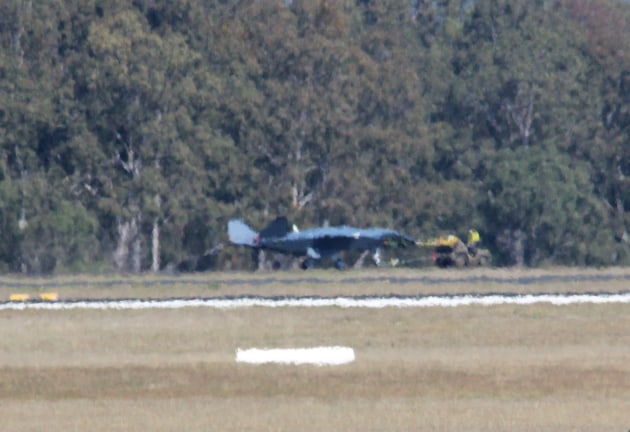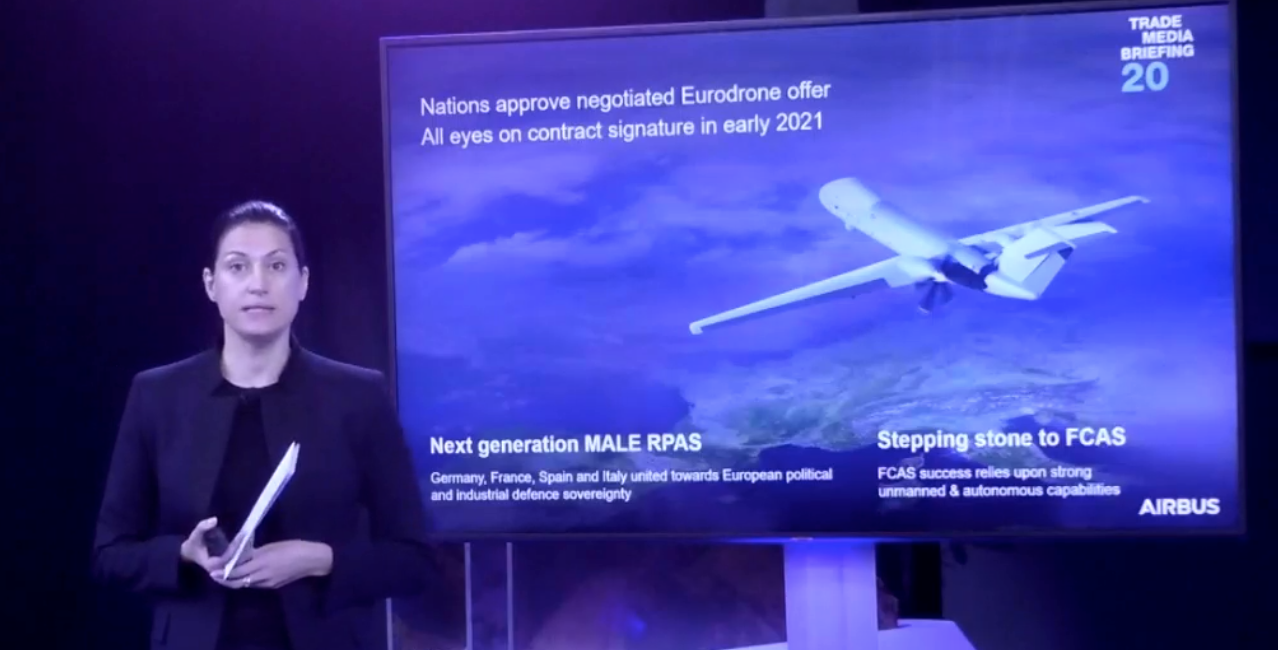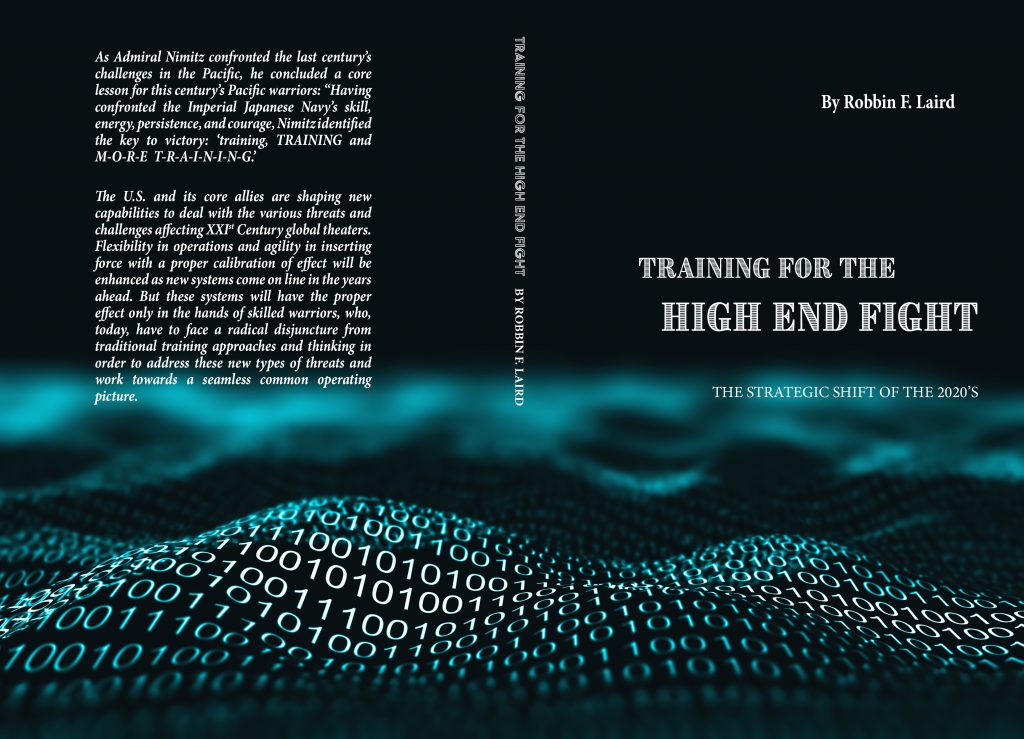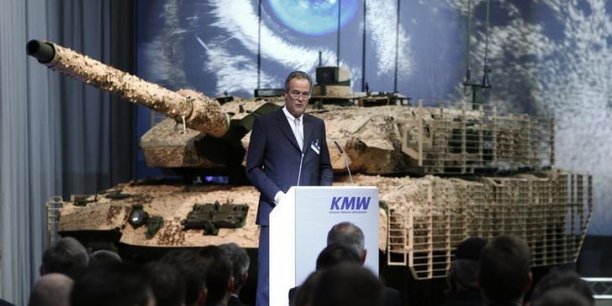By Robbin Laird
The second strand of the International Fighter Conference 2020 was the question of the effectors which could be delivered by the evolution of air combat power, notably leveraging multi-domain capabilities. This strand was woven throughout the day and could be seen in a variety of ways, in a diversity of presentations.
When one focuses on effectors and is discussing fighter aircraft, the first thing that comes into mind are the weapons carried by that fighter and how they are used, for which targets and at which range. One might also focus on the non-kinetic effects if one is highlighting the domain of the “Old Crows,” namely electronic warfare. But most assuredly the focus is upon what is being carried on those fighters and how those fighters might work with other airborne assets to deliver a combat effect.
But the fighter conference shifted the focus of attention on how fighters can deliver a combat effect within a broader set of interactive combat relationships, which in my mind, constitute a kill web. The first allied force, which actually discussed the kill web concept, was the RAAF. And it appeared in an interview I did with Air Commodore Roberton now Air Vice-Marshal Steven Roberton which I had prior to ta 2017 Williams Foundation seminar in his office at Williamtown Airbase with as he discussed what he called a three-phase process underway and “we are only at the first step.”
“We need to be in the position where our maritime surface combatants are able to receive the information that we’ve got airborne in the RAAF assets. Once they’ve got that, they’re going to actually be trying to be able to do something with it. That is the second level, namely, where they can integrate with the C2 and ISR flowing from our air fleet.
“But we need to get to the third level, where they too can provide information and weapons for us in the air domain. That is how you will turn a kill chain into a kill web. That’s something that we want in our fifth-generation integrated force. And in a fifth-generation world, it’s less about who is the trigger shooter, but actually making sure that everybody’s contributing effectively to the right decisions made as soon as possible at the lowest possible level. And that is why I see the F-35 as an information age aircraft.”
This year’s Fighter Conference clearly was operating within this frame of reference somewhat like the famous Moliere’s gentlemen who was speaking prose without knowing it.
There were a number of ways the changing nature of effectors was discussed.
The first was with regard to the changing machine to machine relationships among the ISR collectors and how those collectors would gain more utility to fighting at the speed of light with artificial intelligence decision tools managing the data worked among the ISR machines.
The second was how then machines could work more effectively with humans, cognitively and interactively. But as a senior USAF scientist put it, the key effort needs to be to integrate any innovations in the man-machine working relationships into evolving concepts of operations, otherwise innovations in these domains would not be realized.
The machine dynamic was discussed in part in terms of remotes working with manned aircraft. A very insightful presentation was with regard to the loyal wingman program in Australia. Here Boeing Australia is working with the RAAF to shape a remote system with different payloads which could work with a manned aircraft to shape a wolfpack operationally.
Getting to the point where this would work is challenging for a number of challenges need to be met and resolved in order for remotes to fly effectively with a manned asset to deliver the effects which a wolfpack could deliver. These challenged include but are not limited to integrating into future battle space management frameworks, communications, and cyber standards, and the development of trusted AI algorithms, as these elements are critical to ensure that the RAAF would be able to trust the Loyal Wingman on combat operations.
The FCAS presentation highlighted the coming of remote carriers and their potential role in providing for combat effects and is seen as a major aspect of shaping the design and configuration of the new combat aircraft envisaged to replace Rafale and Eurofighter. Similarly, the Tempest program has similar aspirations, and notably MBDA is in both programs, and as they already build loitering munitions, it is not surprising that they would be on ground floor for smaller remote carriers as well.
Clearly, the first strand of the conference – the enablers – was highly interactive with this second strand focusing on effectors. For example, with regard to third party targeting, a key element of any kill web approach, the question is how to have trustworthy ISR determination and verification of where and when one wants the combat effect, and to then order and direct the means to the area of interest, and to be able to do so without a kinetic or non-kinetic effector necessarily operating directing from a particular fighter.
Many of the discussions of the conference were abstract, conceptual and futuristic but I recently went to Naval Air Station Fallon and observed a future is now event. My visit occurred as the US Navy was hosting a new exercise called Resolute Hunter which is being designed to shape a new paradigm for how 21st century ISR capabilities can be worked to provide for enhanced mission execution.
Much like how NAWDC has added two new warfighting competencies to its program, namely, dynamic targeting and MISR officers, Resolute Hunter is complementing Red Flag, but in some important ways launching a new paradigm for the ISR forces to provide a more significant and leading role for the combat forces.
With the significant upsurge in the capabilities of sensor networks, and the importance of shaping better capabilities to leverage those networks to shape an effective mission, the role of the ISR platforms and integratable forces are of greater significance going forward in force development.
Rather than being the collectors of data and providing that data to the C2 decision makers, or to specific shooters, the ISR force is becoming the fusers of information to provide for decisions distributed in the battlespace to deliver the right combat effect in a timely manner.
When I returned to the East Coast, I had a chance to discuss with Rear Admiral Meier, Naval Air Force Atlantic, how Resolute Hunter was different from Red Flag. “The origins of Red Flag and of TOP GUN were largely tactically focused. Resolute Hunter is focused on shaping an evolving operational approach leveraging the sensor networks in order to best shape and determine the operational employment of our forces and the delivery of the desired combat effect.”
The reshaping of enablers, and recrafting of effectors and their delivery is part of the redesign of capabilities and the question of what kinds of concepts of operations are entailed in these changes is the subject of my next article
Note: Ed Timperlake and I are working a manuscript entitled Maritime Kill Webs, 21st Century Warighiting and Deterrence to be published by USNI Press in 2022.








